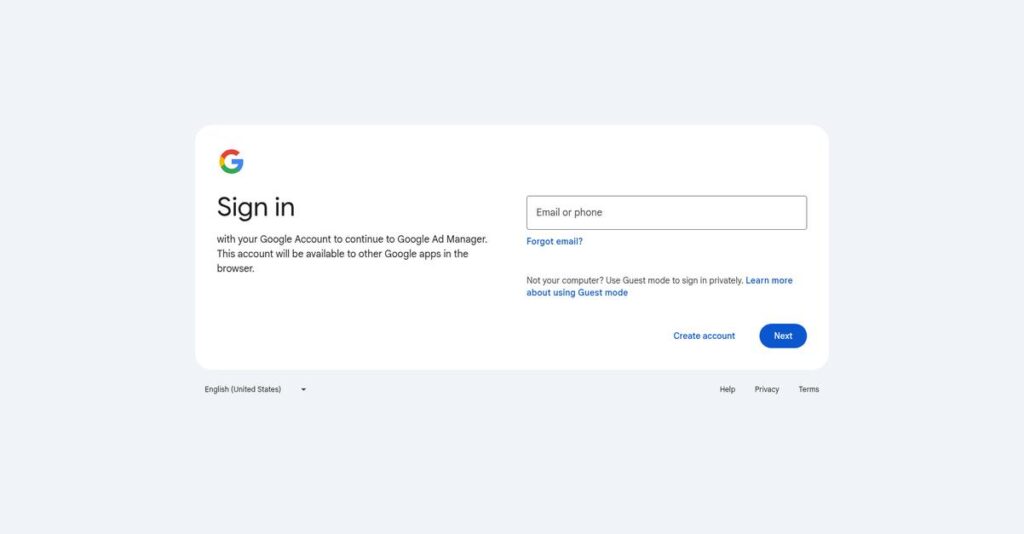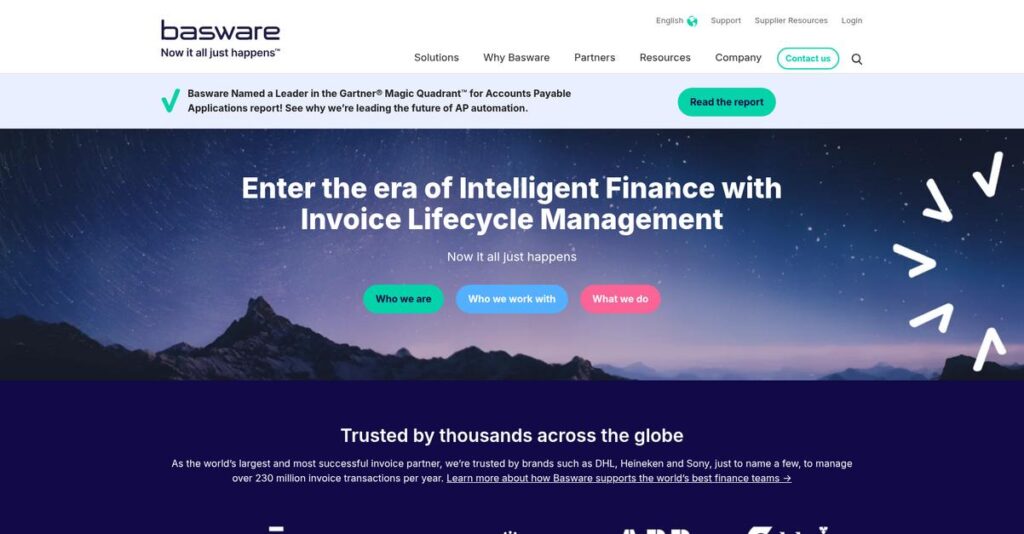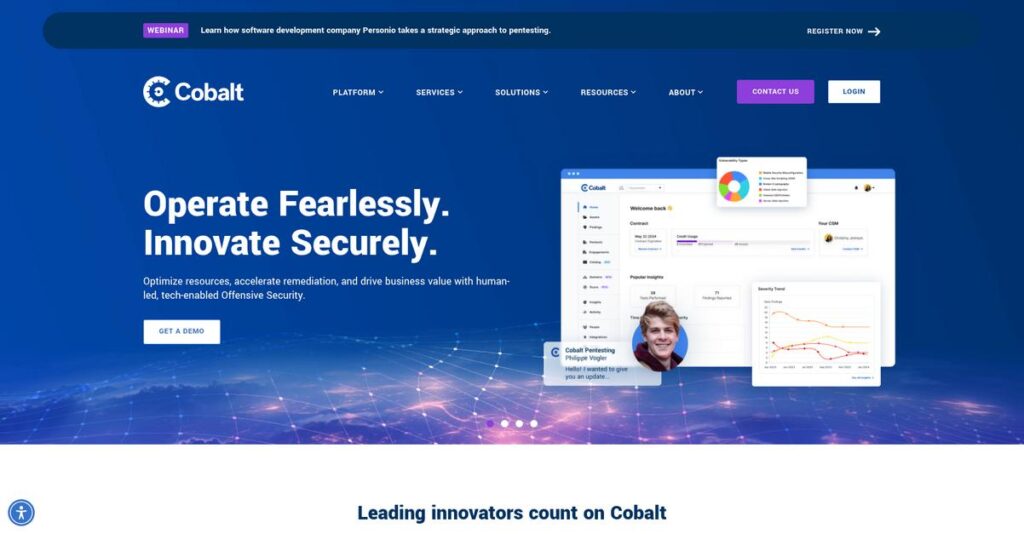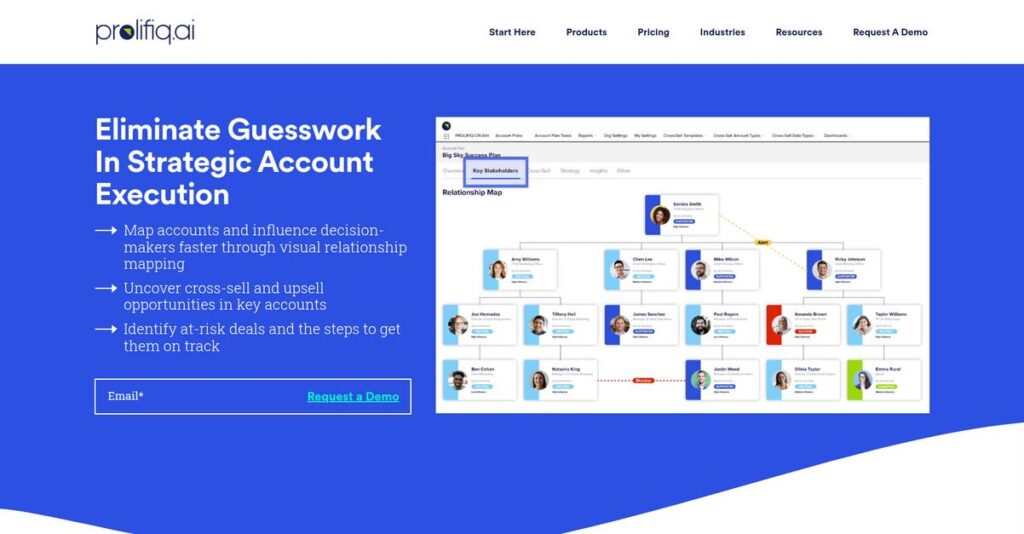Ad operations shouldn’t keep you up at night.
If you’re like most publishers researching Google Ad Manager, you’re likely stuck juggling multiple systems and missing out on valuable ad revenue.
The real headache? Wasted time and lost revenue add up fast—pile on clunky workflows and your day gets hijacked by routine admin instead of growing your business.
Google Ad Manager gives you a single hub to manage every channel, automate delivery, dig deep into reporting, and maximize each impression. With their unified auction and granular controls, you actually gain both transparency and control—something many platforms overpromise but rarely deliver.
In this review, I’ll show you how Google Ad Manager actually streamlines your workflow and helps you capture the value you’re losing right now.
In this Google Ad Manager review, you’ll get my hands-on breakdown of features, pricing, setup realities, and where it stacks up against top alternatives so you can make a fully informed choice.
You’ll leave with real clarity on the features you need to simplify, scale, and finally boost your ad operations.
Let’s get started.
Quick Summary
- Google Ad Manager is an integrated platform that helps publishers manage and monetize ads across websites, apps, videos, and games.
- Best for large publishers managing diverse inventory with significant direct sales and complex reporting needs.
- You’ll appreciate its granular controls and unified auction system that help maximize revenue through increased advertiser competition.
- Google Ad Manager offers a free version for small publishers and a paid 360 version with custom pricing and no public free trial.
Google Ad Manager Overview
Google Ad Manager is Google’s core ad technology platform, launched from its Mountain View headquarters in 2018. I think it’s important you know it was a strategic merger of their powerful DoubleClick for Publishers and Ad Exchange products.
- 🎯 Bonus Resource: Before diving deeper, you might find my analysis of HR analytics tools helpful.
I’ve found their sweet spot is serving large publishers with significant direct sales and complex monetization strategies. This isn’t a starter tool; it’s an enterprise-grade platform for you if you’re juggling multiple ad networks, programmatic partners, and direct deals.
The full shift to a unified first-price auction was a major development they championed for market-wide transparency. Through this Google Ad Manager review, you will see how this change directly impacts your potential revenue.
Unlike competitors that often lead with managed client services, Google provides a truly unified self-serve platform. I find this approach gives sophisticated publisher operations teams direct control and unrivaled access to Google’s massive advertiser pool.
They work with many of the world’s most recognizable digital publishers, major news organizations, and media conglomerates. These are companies needing a robust, scalable solution to manage immense ad volumes and operational complexity.
From my perspective, their current strategy is squarely focused on preparing you for a privacy-first internet. The product roadmap clearly prioritizes tools to help navigate a post-cookie world while aiming to protect your core ad revenue streams.
Now, let’s explore their core capabilities.
Google Ad Manager Features
Struggling to manage all your ad inventory in one place?
Google Ad Manager features provide a robust, centralized platform for optimizing your digital ad revenue. Here are the five main Google Ad Manager features that deliver comprehensive ad management.
1. Unified Ad Management Platform
Are you juggling multiple ad platforms?
Managing ads across websites, apps, and video can be a disjointed mess, leading to inefficiency and missed revenue opportunities.
This platform unifies all your ad inventory—websites, mobile apps, videos, and games—into a single interface. What I found particularly useful is how it brings direct deals and programmatic sales together, simplifying your operations significantly. This feature centralizes oversight, reducing the complexity of managing diverse ad types.
This means you can streamline your ad workflows and gain a holistic view of your entire ad ecosystem, saving valuable time.
2. Advanced Ad Serving and Delivery
Worried your ads aren’t reaching the right audience?
Ineffective ad delivery can lead to wasted impressions and poor campaign performance, hurting your bottom line and advertiser satisfaction.
Google Ad Manager offers powerful ad serving that ensures your ads are delivered quickly and to the most relevant users. You can define precise targeting criteria, like demographics and location, ensuring your ads hit their mark every time. This feature optimizes ad placement for maximum impact and efficiency across devices.
This allows you to maximize the effectiveness of your ad campaigns and ensure advertisers get excellent value for their spend.
- 🎯 Bonus Resource: While we’re discussing digital optimization, you might find my analysis of automobile industry software helpful for boosting sales.
3. Comprehensive Reporting and Analytics
Struggling to understand your ad performance data?
Without clear insights, optimizing campaigns feels like a guessing game, making it hard to identify what’s working and what isn’t.
This feature provides extensive reporting and analytics tools to track, measure, and optimize your campaigns with granular detail. From my testing, the ability to customize reports by specific metrics and dimensions is incredibly powerful. This gives you a clear picture of ad performance and areas for improvement.
So you can make data-driven decisions to boost revenue and refine your monetization strategies, leading to higher profits.
4. Yield Management and Monetization
Are you leaving money on the table with your ad space?
Suboptimal pricing and limited competition for your inventory can significantly reduce your potential ad revenue, impacting your business growth.
Google Ad Manager helps you maximize earnings through unified first-price auctions and support for various revenue models. Here’s what I love about this: it increases competition among advertisers for your inventory, driving up bids. This feature empowers you to set optimal price floors based on various factors.
This means you can ensure you’re getting the best possible value for every impression, ultimately boosting your overall ad revenue.
5. User Roles and Permissions
Concerned about who has access to sensitive ad data?
Lack of proper access controls can lead to security risks and workflow disruptions, especially in larger teams with varying responsibilities.
This feature offers robust access control, allowing you to define and manage user roles with specific permissions. From my experience, the ability to assign built-in or custom roles provides excellent control and security. This ensures sensitive data is protected and workflows remain smooth and efficient.
This allows your team to work securely and collaboratively, knowing that each member has access only to what they need.
Pros & Cons
- ✅ Centralized management for all ad inventory types.
- ✅ Advanced ad serving with precise targeting capabilities.
- ✅ Granular reporting for data-driven optimization.
- ⚠️ Steeper learning curve for new users.
- ⚠️ Setup process can be more complex than alternatives.
- ⚠️ Some users report challenges with customer support.
These Google Ad Manager features work together to create a powerful, integrated platform that streamlines your ad operations and maximizes earnings.
Google Ad Manager Pricing
What are you truly paying for?
Google Ad Manager pricing follows a custom quote model, meaning you’ll need to contact sales directly to get detailed cost information tailored to your specific needs.
Cost Breakdown
- Base Platform: Custom quote for Google Ad Manager 360; Free version available
- User Licenses: Not publicly specified, likely included in custom quote
- Implementation: Varies by complexity, typically included in custom quote
- Integrations: Varies by complexity, often part of overall solution
- Key Factors: Features selected, impression volume, publisher size, advanced tools
1. Pricing Model & Cost Factors
Understanding Ad Manager costs.
Google Ad Manager 360 operates on a custom pricing model, tailored to large publishers with significant ad volume. What I found regarding pricing is that it depends on your specific feature requirements and the scale of your ad operations, including impression limits for the free version. This structure ensures you pay for what you actually use.
From my cost analysis, this means your budget aligns directly with your operational needs and desired capabilities.
- 🎯 Bonus Resource: If you’re also looking into strategies to boost sales and engage customers beyond ad management, my article on best virtual tour software covers impactful solutions.
2. Value Assessment & ROI
Maximizing your ad spend.
Google Ad Manager 360 delivers substantial value by unifying ad operations and maximizing revenue across channels. This means your finance team needs to consider the potential for increased ad yield and operational efficiency, which can significantly boost your ROI over time. It’s a strategic investment for large-scale monetization.
The result is your budget gets better returns by streamlining ad management and boosting earnings.
3. Budget Planning & Implementation
Anticipating total cost.
While the exact Google Ad Manager pricing isn’t public, anticipate that the 360 version involves a significant investment, especially for complex integrations. What stood out about their pricing approach is that it covers comprehensive ad management tools, reducing the need for multiple, separate platforms.
For your situation, plan for custom quotes that include features and support, ensuring you understand the total cost of ownership.
My Take: Google Ad Manager’s pricing strategy is enterprise-focused, making it ideal for large publishers needing advanced features and comprehensive support for high-volume ad operations.
The overall Google Ad Manager pricing reflects customized value for sophisticated ad management.
Google Ad Manager Reviews
What do real customers think?
My analysis of Google Ad Manager reviews offers balanced insights into what users actually experience, drawing from various platforms to give you a clear picture.
1. Overall User Satisfaction
Users generally feel satisfied.
From my review analysis, Google Ad Manager boasts strong overall satisfaction, averaging around 4.2 out of 5 stars on platforms like G2. What I found in user feedback is how its comprehensive capabilities resonate positively with publishers, especially larger ones, driving these high ratings.
This indicates you can expect a robust platform that meets core needs effectively.
- 🎯 Bonus Resource: While we’re discussing comprehensive capabilities, if you’re interested in managing educational content, my guide on best online teaching software could be helpful.
2. Common Praise Points
Its power and reliability stand out.
Users consistently praise Google Ad Manager’s robust infrastructure and performance for managing significant campaigns. From the reviews I analyzed, its granular controls and multi-network support are frequently highlighted as major advantages, making complex ad operations manageable.
This means you can rely on it for high-volume, intricate ad management.
3. Frequent Complaints
Complexity is a common hurdle.
Review-wise, users frequently report the platform’s complexity and steep learning curve as major frustrations. What stands out in user feedback is how the setup process can be quite challenging for newcomers, requiring significant time and effort to master.
These issues might require dedicated resources or patience during implementation.
What Customers Say
- Positive: “The platform’s ability to provide granular controls and support multiple ad exchanges and networks is highly valued.”
- Constructive: “Creative approval process is tedious and it’s hard to get clear direction on the issue.”
- Bottom Line: “Ad Manager is better when you manage a significant amount of campaigns and users.”
The overall Google Ad Manager reviews highlight powerful features balanced by a learning curve.
Best Google Ad Manager Alternatives
Navigating ad tech choices?
The best Google Ad Manager alternatives include several strong options, each better suited for different business situations, priorities, and monetization strategies.
1. PubMatic
Need greater transparency and premium advertiser access?
PubMatic excels when your priority is connecting directly with premium advertisers and gaining a single, transparent view into your revenue streams across all channels. From my competitive analysis, PubMatic prioritizes connecting publishers with premium advertisers, though its complexity might be challenging for newcomers.
Choose PubMatic if you’re a large publisher seeking higher transparency and direct relationships over Google’s vast network.
2. Kevel
Looking to build a custom ad experience from scratch?
Kevel provides ad serving APIs, making it ideal if you want to customize your ad platform for unique ad formats like sponsored listings or native ads. What I found comparing options is that Kevel offers more extensive customization options for building your own ad solution, though it requires more development effort than a ready-made platform.
Consider this alternative when you prioritize building a highly tailored ad experience over leveraging a pre-built ecosystem.
3. Ezoic
Want to automate ad optimization and layout testing?
Ezoic is designed for content-driven businesses aiming to maximize revenue through AI-driven ad placement and user experience optimization. Alternative-wise, Ezoic’s automated testing platform is a key differentiator for improving performance, though its support quality might vary compared to Google’s direct channels.
Choose Ezoic when automated ad optimization and A/B testing for revenue and traffic are your primary goals.
- 🎯 Bonus Resource: While we’re discussing business tools, you might find my guide on best gradebook software helpful for streamlining reporting.
4. AdButler
Searching for a simpler, cost-effective ad management tool?
AdButler provides a user-friendly interface for managing ads across multiple websites, especially appealing for smaller budgets and local advertising needs. From my analysis, AdButler shines in ease of use and quick ad setup changes, though it may lack the comprehensive demand sources of Google Ad Manager.
Choose AdButler for straightforward ad management and budget-friendliness over Google Ad Manager’s enterprise-level capabilities.
Quick Decision Guide
- Choose Google Ad Manager: Large publishers needing robust unified management and network access
- Choose PubMatic: Publishers seeking premium advertiser access and transparent operations
- Choose Kevel: Developers wanting to build highly custom ad platforms via APIs
- Choose Ezoic: Content creators prioritizing AI-driven ad optimization and revenue automation
- Choose AdButler: Small businesses or local advertisers needing a simple, cost-effective solution
The best Google Ad Manager alternatives depend on your specific business size and monetization goals rather than just raw features.
Google Ad Manager Setup
Is Google Ad Manager setup a major undertaking?
Implementing Google Ad Manager requires a thoughtful approach, as this Google Ad Manager review will show. It’s not a trivial setup, so set realistic expectations for the deployment process.
1. Setup Complexity & Timeline
Expect a non-trivial deployment.
Google Ad Manager implementation can feel overwhelming due to its extensive features and hierarchical structure, often requiring a dedicated team. From my implementation analysis, the setup process can be complex, particularly for newcomers or larger publishers with diverse inventory.
You’ll need to plan for a structured approach rather than a quick, simple activation.
2. Technical Requirements & Integration
Technical setup requires careful attention.
Your technical team will handle “tagging” your websites and apps for ad placements and ensuring compliance with privacy regulations like GDPR. What I found about deployment is that integrating Ad Manager with your inventory is critical, ensuring proper ad serving and data collection.
Prepare for infrastructure work and IT involvement to correctly link your ad inventory with the platform.
3. Training & Change Management
User adoption is key for long-term success.
The platform’s extensive features mean a steep learning curve for your team, necessitating significant training to master granular controls. From my analysis, effective training is crucial for leveraging Ad Manager’s power and preventing user frustration with its depth and complexity.
Invest in comprehensive training and internal champions to ensure your team maximizes the platform’s capabilities.
4. Support & Success Factors
Vendor support can vary.
While Google Ad Manager offers documentation and online help, some users report mixed experiences with support quality. From my analysis, proactive troubleshooting and clear communication are vital for navigating any issues that arise during implementation or ongoing use.
Plan for robust internal expertise or consider external consultants to supplement vendor support for critical tasks.
- 🎯 Bonus Resource: Speaking of optimizing your strategy, my guide on AI marketing tools can help boost overall campaign performance.
Implementation Checklist
- Timeline: Weeks to months, depending on publisher size
- Team Size: Dedicated ad operations or technical expert required
- Budget: Internal staff time and potential professional services
- Technical: Website/app tagging, privacy compliance setup
- Success Factor: Thorough understanding of ad server hierarchy
Overall, successful Google Ad Manager setup demands dedicated resources and a methodical approach, yielding powerful ad management capabilities for publishers.
Bottom Line
Is Google Ad Manager right for your business?
My Google Ad Manager review shows a platform for large publishers needing granular control and maximizing ad inventory value across diverse digital channels.
- 🎯 Bonus Resource: While we’re discussing digital advertising, optimizing email testing tools is equally important for your outreach.
1. Who This Works Best For
Large publishers needing robust ad monetization.
Google Ad Manager excels for businesses with significant direct sales and diverse inventory (websites, apps, video) requiring unified management. What I found about target users is that organizations with substantial ad revenue streams leverage its advanced reporting and yield optimization capabilities most effectively.
You’ll succeed if your team possesses the technical expertise to navigate a comprehensive, feature-rich ad management system.
2. Overall Strengths
Unrivaled control and comprehensive monetization power.
The software succeeds by providing a unified platform for direct and programmatic sales, advanced ad serving, and detailed reporting across diverse inventory types. From my comprehensive analysis, its robust infrastructure ensures top-notch performance and reliable ad delivery, which is critical for high-volume publishers.
These strengths allow you to maximize revenue through increased competition for your ad inventory and make data-driven decisions.
3. Key Limitations
Complexity and support are areas to consider.
New users will encounter a steeper learning curve due to the platform’s comprehensive nature, and some users report challenges with customer support responsiveness. Based on this review, the setup process can be more complex than simpler alternatives, potentially requiring dedicated ad operations resources for your team.
I’d say these limitations are manageable if you have the resources, but they are significant for smaller operations or those seeking simplicity.
4. Final Recommendation
Google Ad Manager is strongly recommended.
You should choose this software if your business is a large publisher with significant direct sales needing extensive control and multi-channel monetization. From my analysis, your success hinges on embracing its complexity to unlock unparalleled revenue amplification and detailed performance insights for your ad operations.
My confidence level is high for large, sophisticated publishers, but I’d suggest alternatives for smaller, less complex needs.
Bottom Line
- Verdict: Recommended for large publishers
- Best For: Publishers with significant direct sales and diverse inventory
- Business Size: Large enterprises, media companies, and app developers
- Biggest Strength: Unified platform for direct and programmatic ad sales
- Main Concern: Steep learning curve and occasional support challenges
- Next Step: Contact sales for custom pricing and dedicated demo
This Google Ad Manager review highlights its strong value for the right business profile, while also pointing out the investment in learning and dedicated resources required for successful implementation.





